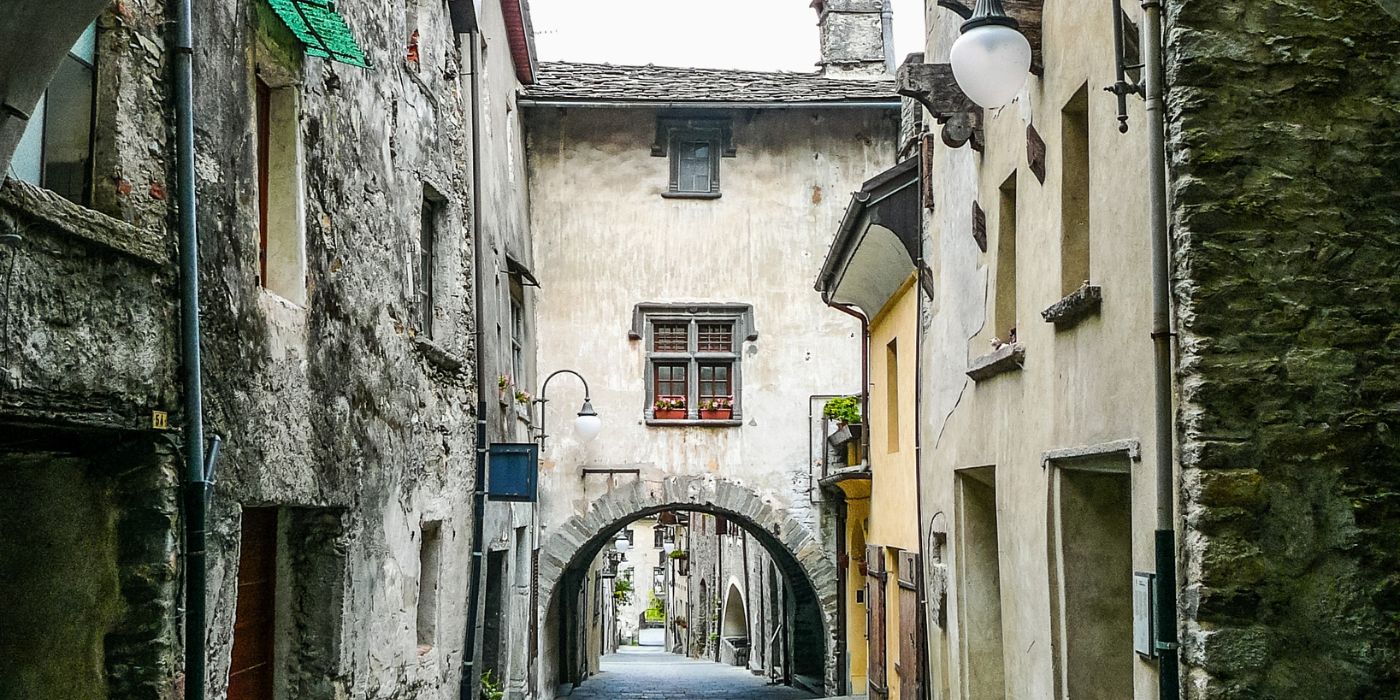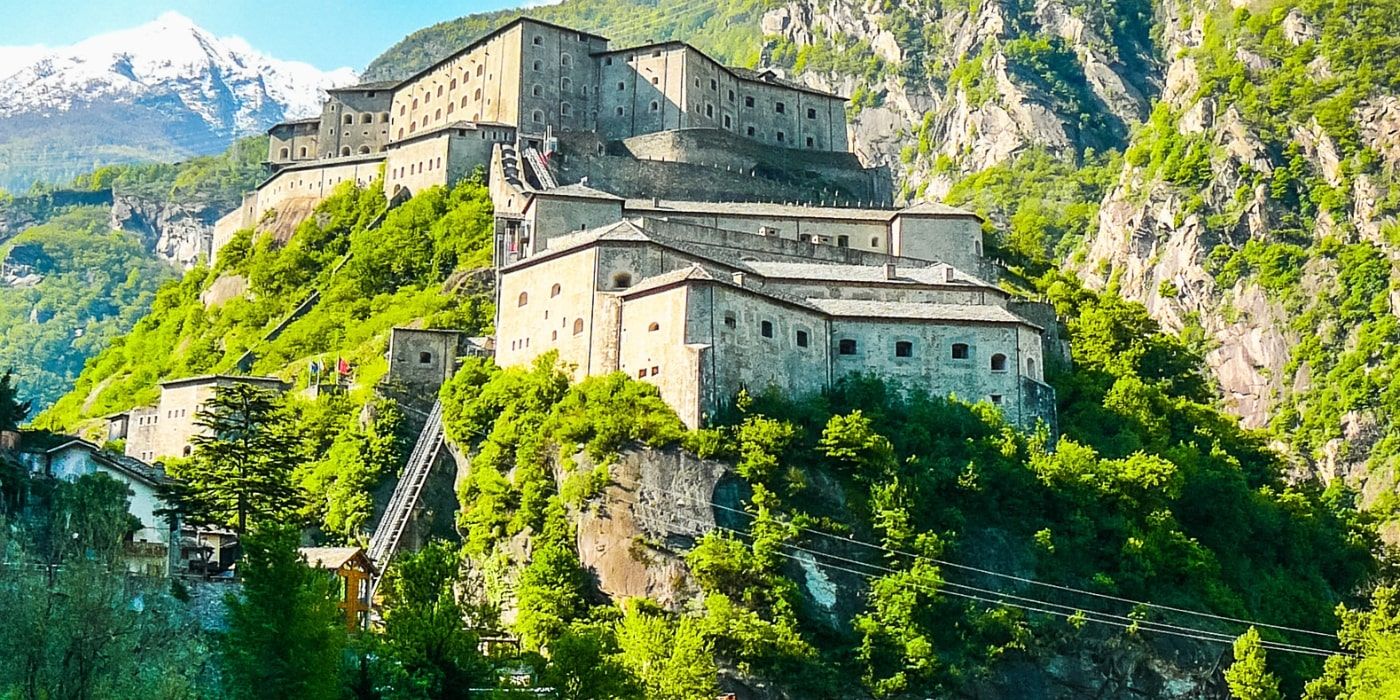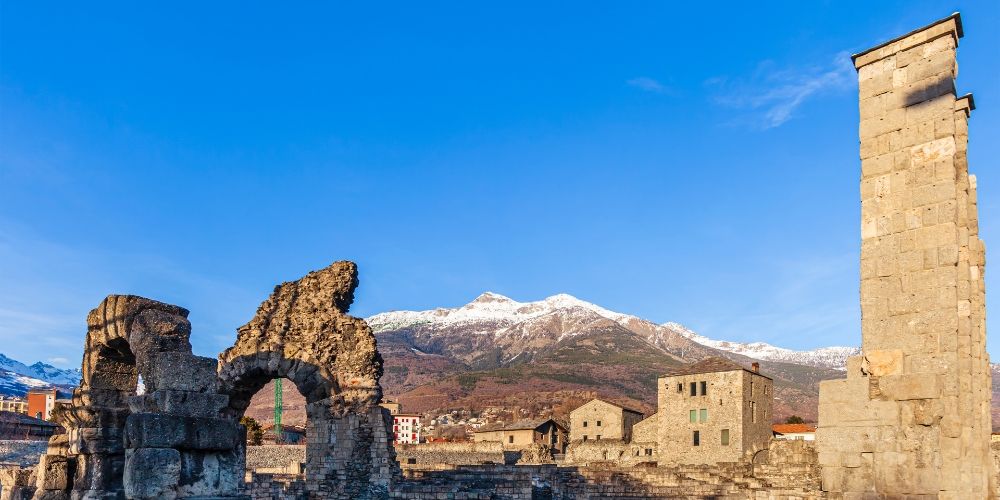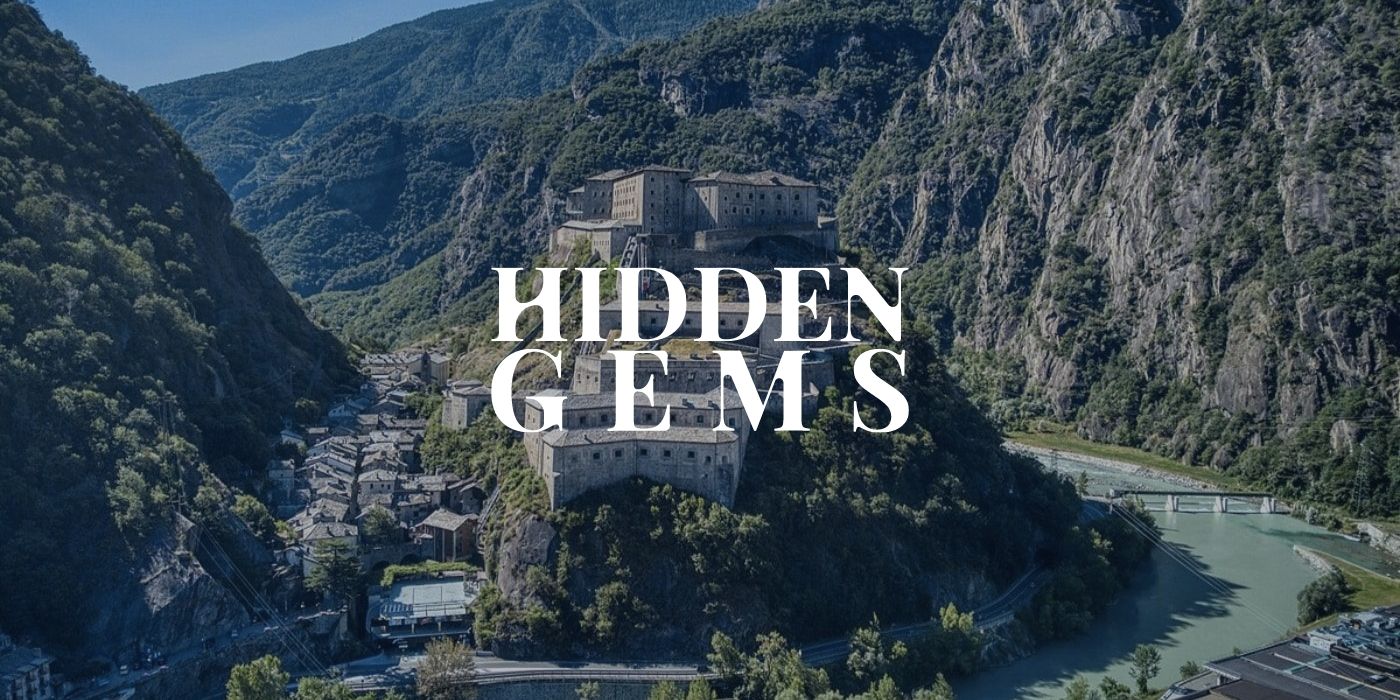Bard, a small hidden gem in Aosta Valley, is a place of rare beauty. And while it really is small, spanning only three square kilometers, as for the hidden factor, that's another story.
With its imposing castle, the village is a precious destination that needs to be explored slowly, much like ancient travellers did. The Via delle Gallie, a crucial connection between the Po Valley and Transalpine Gaul, passed through Bard, allowing it to thrive in its privileged position since the Middle Ages.
Knights no longer frequent these streets, but you might chance upon a superhero or two...
Here, you can find our suggestions on what to do and see in Bard. Additionally, we are sharing some curiosities about this tiny village perched among the heights of the smallest region in Italy.

What to see in Bard

The village of Bard retains its original medieval urban layout. As part of the Borghi più belli d'Italia circuit, the town appears to visitors as a well-preserved gem unaffected by time.
Via Vittorio Emanuele II is the main street that winds through the settlement. It climbs up to the fortress and is lined with a series of ancient palazzi—some with particular historical significance—each telling its own tale. One of these buildings is Palazzo Nicole, which captures the eye of visitors as they enter the town through the Courlét gate. Bullet holes from the 1800 siege are still visible on the facade, bearing witness to the village's past.
Each house has its own name, almost as if to emphasize the uniqueness that sets them apart: Challant, Valperga, Urbano, Ciuca, Vescovo, Meridiana.
The principal place of worship, the Church of Santa Maria Assunta, with its dramatic 13th-century bell tower, is located in the central square, next to the town hall and close to the fortress's entrance—the main attraction of Bard. That's where the second leg of the journey begins.
Listen to the podcast version of the article with Monna Lisa and Leonardo's voices
What to See in Bard: the Impregnable Fortress

While the village of Bard is decidedly small, the same cannot be said for its fortress, which, in contrast, dominates the landscape and imposes itself with a massive and majestic silhouette. Some numbers: three buildings, 14,467 square meters of surface, 2,036 square meters of courtyards, 283 rooms, 806 steps, 385 doors, and 323 windows.
Although the current design dates back to the first half of the 19th century, its roots extend to much earlier times. The area enjoyed the surveillance and protection of its stronghold for centuries until, during the Napoleonic siege of 1800, it was relentlessly brought down.
However, the fortress was reconstructed a few decades later when Carlo Felice di Savoia commissioned engineer Francesco Antonio Olivero to design a state-of-the-art barrier fortress. This project gave Bard a monumental and renewed 'residence' that testifies to its resilience over time.
After the encounter with Napoleon, the fortress became the stage for another, even more epic battle. Albeit only on the big screen.
It's 2015 when Iron Man and companions fight to save the world in the shadow of the castle, turned into the villain's headquarters in Avengers: Age of Ultron. Statues and totems indicate the points where the scenes were filmed: discover them all by participating in the Avengers Tour. You can book it by writing to prenotazioni@fortedibard.it.
Today, the Fort of Bard is a culturally vibrant hub with permanent museums, exhibition spaces, workshops, entertainment for children, accommodations, and commercial activities. You can find more details in our dedicated article.
The museums to see in Bard
In addition to hosting numerous temporary exhibitions, the Fort of Bard features three permanent museums.
The Museo delle Alpi is on the first floor of the Carlo Alberto Opera. Its twenty-five rooms are equipped to provide an engaging experience suitable for all, including the younger audience. Visitors can learn more about the mountain's peculiar environment through a multimedia journey and interactive installations.
Another museum space is dedicated to the fort's prisons, comprising twenty-four narrow cells (1.3 x 2 meters) distributed across four sections. The access is via a gallery adorned with vintage prints and paintings telling the history of the building. The experience also includes three-dimensional models illustrating the castle's transformations over the ages, accounts of Napoleon's siege, and an overview of the events that led reconstruction.
Finally, the Museum of Fortifications and Frontiers in the Ferdinando Opera features a display of vintage weapons and scale models of defensive structures and miniature armies.
In addition to the other exhibition areas, visitors can explore the Le Alpi dei Ragazzi section, which is dedicated to raising awareness about the health of the Alpine peaks and promoting sustainable living practices to combat global warming.
What to do in Bard: Unmissable Events
Throughout the year, Bard hosts distinctive and engaging events, such as historical reenactments, concerts, exhibitions, and festivals. However, a few particular occasions exude an even more particular charm.
One such event is the Festa dell'Assunta celebration on the 15th of August. The village of Bard comes to life with colour and joy during Ferragosto, infusing the medieval hamlet with a cheerful vitality. The customary market in Piazza Cavour, music echoing through the streets, and the spectacle of flag-wavers are all part of the festive atmosphere.
Another enchanting time to visit Bard is the Christmas season. Markets and nativity scenes adorn the historic centre, but these are not the only attractions.
For 2023, mark your calendars from the 8th of December to the 7th of January for Lumières de Noël au Fort de Bard (Christmas Lights at Fort Bard), an immersive show with sounds and lights in the Fort's Parade Ground. This year's theme is 'The Enchanted Valley', a sparkling tribute to the culture and landscapes of Valle d'Aosta.
And that's not all. During the holiday season, the fortress transforms into the North Pole with Santa's Village, where entertainment and workshops delight the little ones throughout the winter.
What to see near Bard

A visit to the village of Bard fits nicely into a broader itinerary covering the most beautiful views of the Aosta Valley. The route takes travellers through landscapes of vineyards, forests and valleys where medieval castles, ancient Roman ruins and sloping-roofed villages spring up.
There are many routes that, even if not traversed in their entirety, offer exciting travel ideas, such as the Via Francigena, the Roman Road of the Gauls and the Cammino Balteo, a ring route along more than forty municipalities.
If you're interested in sustainable travel, you can also take the international cycle route that passes through Bard and follow it all the way to the Swiss border by e-bike. Along the way, you'll find various options for recharging electric bikes, including pillars, refuges, and bike hotels that offer the service.
Those who want to follow the continuity of history and tradition between Valle d'Aosta and Piedmont can stretch to the Castello di Masino, the centuries-old residence of the Valperga counts. The castle offers various joint promotional initiatives with the Bard Fortress.
Find more about Castello di MasinoHow to get to Bard

Bard is 48 km from Aosta and 78 km from Turin. You can reach it by car from the Valle d'Aosta's SS. 26 and by taking the A5 motorway, exiting at Pont-Saint-Martin to the south and Verrès to the north.
If you're coming from Switzerland via the Gran San Bernardo Tunnel, you'll be happy to hear you're entitled to free return travel within three days if you visit the Fortress of Bard.
Once arrived at your destination, leave your car in one of the free car parks within a kilometre from the village. Some also offer a shuttle service to reach the fort conveniently. There is an additional parking space at the foot of the castle, but you have to pay for it.
Travelling by train? The nearest station is Hône-Bard, 600 metres from the village.
The closest airport is Torino-Caselle, about 60 km away.
Find more about Torino + Piemonte CardAbout the author
Written on 08/12/2023



Lorena Calise
A hidden gem in Italy's smallest region: find what to see in Bard. Amid history, nature and an impregnable castle.